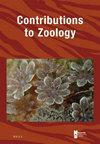Carlgren’s hesitation allayed: redescription and systematics of Heteranthus verruculatus Klunzinger, 1877 (Cnidaria, Actiniaria), with a redefinition of Heteranthidae Carlgren, 1900
IF 2.2
2区 生物学
Q1 ZOOLOGY
引用次数: 0
Abstract
Species boundaries delineating tropical sea anemones (Cnidaria, Actiniaria) of the zooxanthellate genus, Heteranthus Klunzinger, 1877, are unclear. There are currently two valid Heteranthus species: type species Heteranthus verruculatus Klunzinger, 1877, first reported from Koseir, Egypt, and H. insignis Carlgren, 1943, from Poulo Condore, Vietnam. In describing the latter from a single, poorly preserved specimen, zoologist Oskar Carlgren expressed apprehension with traits he had used to establish this species. Carlgren’s doubts persisted later in writing when he found a similar-looking sea anemone from the Great Barrier Reef. Crucial details to positively identify either species have since remained limited. Here, we re-diagnosed Heteranthus and re-described its type species based on observations of specimens we have obtained from Singapore and Pulau Ambon (Indonesia), and of museum material collected elsewhere across the Indo-West Pacific region (n > 180). Supported by molecular phylogenetic evidence, the family Heteranthidae Carlgren, 1900 was reinstated and re-diagnosed. Heteranthus verruculatus is encountered in the lower intertidal region amongst seagrass, in rocky crevices, or coral rubble. It occurs as solitary individuals or in clonal clusters, well-camouflaged against the substratum. Individuals were observed to frequently propagate by longitudinal fission, resulting in a varied appearance. Type material of H. verruculatus and H. insignis were re-examined and as we found no differences between them, the two were synonymised. We inferred that Carlgren probably misinterpreted cnidae and histological data in defining H. insignis as a distinct species. This revision clarifies the taxonomy and geographic range of H. verruculatus, an Indo-West Pacific species that is found from the Red Sea to subtropical Australia and Hawaii.Carlgren的犹豫得到了缓解:1877年(刺胞科,猕猴桃属)对Heteranthus verruculatus Klunzinger的重新描述和系统分类,并重新定义了heteranidae Carlgren, 1900年
动物黄藻属的热带海葵(刺胞属,Actiniaria), Heteranthus Klunzinger, 1877年,物种界限尚不清楚。目前已有两个有效种:模式种Heteranthus verruculatus Klunzinger(1877年首次报道于埃及Koseir)和H. insignis Carlgren(1943年报道于越南Poulo Condore)。在描述后者时,动物学家奥斯卡·卡尔格伦(Oskar Carlgren)对他用来建立这个物种的特征表示担忧。卡尔格伦的怀疑在他后来的写作中继续存在,他在大堡礁发现了一个类似的海葵。从那以后,确定这两个物种的关键细节仍然有限。在这里,我们根据从新加坡和印度尼西亚的安汶岛获得的标本,以及在印度-西太平洋地区其他地方收集的博物馆资料,重新诊断了Heteranthus,并重新描述了其模式种。在分子系统发育证据的支持下,恢复并重新诊断了卡尔格伦杂花科。在较低的潮间带地区,在海草、岩石裂缝或珊瑚碎石中会遇到疣状异构体。它以单生个体或无性群集的形式出现,对基质有很好的伪装。观察到个体经常通过纵向裂变繁殖,从而产生不同的外观。我们重新检查了疣状芽孢杆菌和刺状芽孢杆菌的类型材料,发现它们之间没有差异,因此两者是同义词。我们推测,Carlgren在将刺孔虫定义为一个独特的物种时,可能误解了刺孔虫和组织学资料。本修订澄清了从红海到亚热带澳大利亚和夏威夷的印度-西太平洋物种H. verruculatus的分类和地理范围。
本文章由计算机程序翻译,如有差异,请以英文原文为准。
求助全文
约1分钟内获得全文
求助全文
来源期刊

Contributions to Zoology
生物-动物学
CiteScore
4.00
自引率
4.50%
发文量
16
审稿时长
>12 weeks
期刊介绍:
Contributions to Zoology solicits high-quality papers in all systematics-related branches of comparative zoology (including paleozoology). Preference will be given to manuscripts dealing with conceptual issues and to integrative papers (e.g., ecology and biodiversity, morphology and phylogeny and character state evolution, phylogeny and historical biogeography, systematics and bioinformatics, bioinformatics and biodiversity, habitat disturbance and biogeography, etc.). Reviews and alpha-taxonomic contributions are considered for publication, but acceptance will depend on their high quality and exceptional nature.
 求助内容:
求助内容: 应助结果提醒方式:
应助结果提醒方式:


